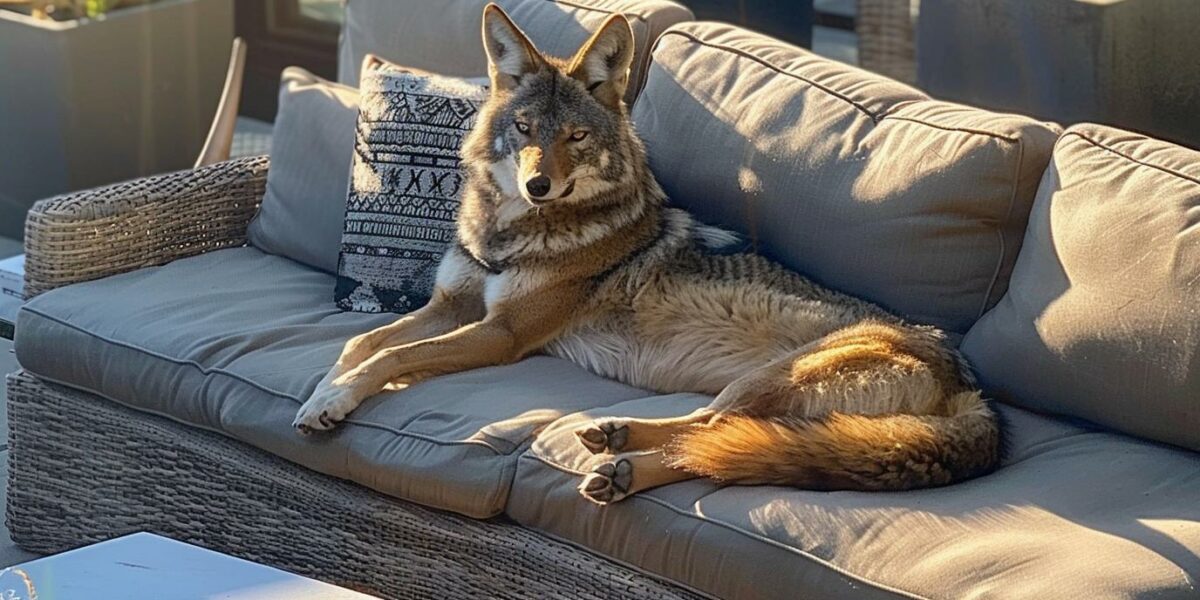An Unexpected Encounter
Imagine sipping your morning coffee, looking out your window, and spotting what seems to be a dog lounging on your patio furniture. But as you squint a little harder, the reality hits—this isn’t any pet! This intriguing sight was exactly what a homeowner in San Francisco experienced. A wild coyote had made itself at home right on the sunny spot of his patio couch. The homeowner’s initial shock turned to curiosity and concern, wondering why this wild creature chose his patio.
The homeowner, puzzled and cautious, decided it was best to keep a safe distance. He watched as the coyote reclined comfortably, soaking up the rays without a care in the world. Realizing this was beyond his expertise, he reached out to Animal Control for help. The response was quick, and soon, an officer was on the scene to handle the unexpected guest. The scene was tense yet mesmerizing, a rare glimpse into the life of a wild animal amidst the urban landscape.
As the Animal Control officer approached, the coyote gave a casual look, stretched languidly, and prepared to leave. “I approached the coyote and started talking to him, telling him that it was time to get up,” Mullen, the officer, recounted. It was a peaceful interaction, with the coyote understanding it was time to move on. He jumped over the fence, heading towards the wooded area behind the house, searching for a more typical resting spot.
This encounter highlights an important lesson about wildlife in urban areas. The coyote, a young male likely exploring new territories, was not aggressive or fearful. Instead, he demonstrated that even wild animals could have moments of peace and coexistence in human-dominated landscapes. The homeowner was left in awe, his view of wild coyotes forever changed.
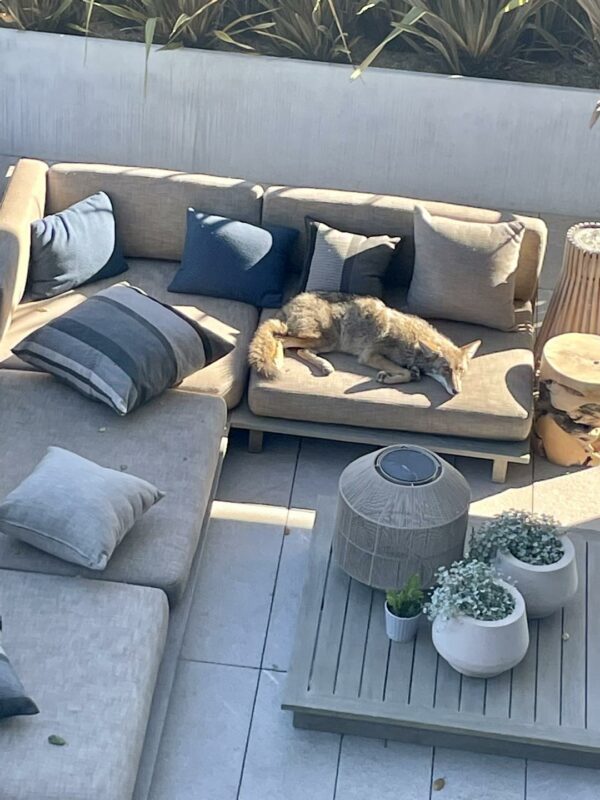
Understanding Our Wild Neighbors
The incident sheds light on the life of urban coyotes, particularly in a bustling city like San Francisco, home to roughly 100 coyotes. These animals often misunderstood and feared, play a crucial role in our ecosystems. As Mullen explained, the young coyote was probably ousted from his den, a common occurrence in the fall and early winter, when young coyotes seek new territories.
Contrary to popular belief, coyotes are not usually aggressive towards humans unless provoked or threatened. They are adaptable, intelligent creatures that help control the rodent population, maintaining a balance in urban ecosystems. The coyote on the patio was a prime example of their generally calm nature when not threatened.
Unfortunately, due to a lack of knowledge and understanding, many urban residents view coyotes as nuisances or dangers. This incident provides a perfect opportunity for community education on how to coexist peacefully with our wild neighbors. Understanding their behavior and needs can drastically reduce conflicts and cultivate a shared environment where both humans and wildlife can thrive.
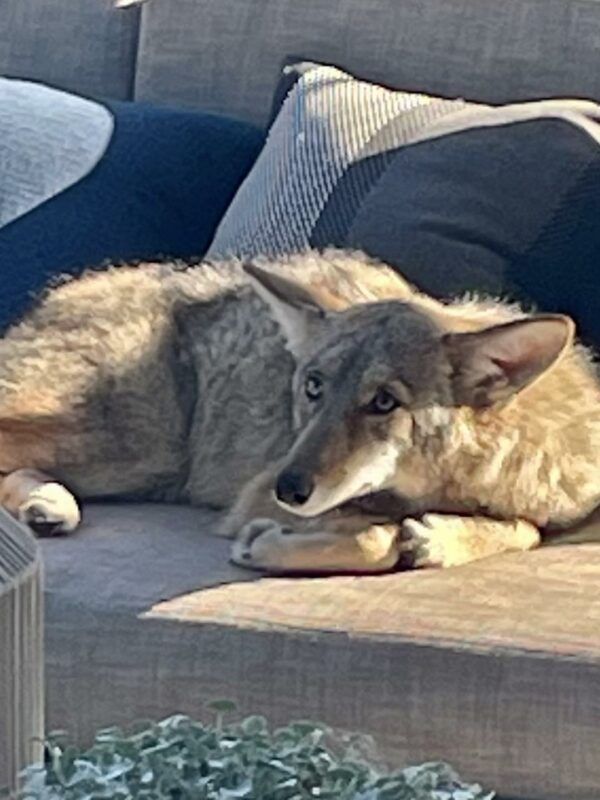
This story of a calm and composed coyote lounging on a patio couch should serve as a reminder of the beauty and tranquility that wildlife can offer. It’s a call to all urban dwellers to learn more about these beautiful creatures and find ways to live alongside them peacefully. Perhaps next time, the sight of a coyote on a patio won’t be such a shock but a welcomed glimpse into the wildness that still surrounds us.
Living with Wildlife
While it’s crucial to maintain a safe distance and respect wild animals’ space, this story exemplifies that peaceful coexistence is possible. Education and awareness about wildlife behaviors and their role in our ecosystems can lead to more harmonious living. By understanding the habits and preferences of species like coyotes, residents can better prepare themselves for potential encounters and avoid unnecessary conflicts.
Efforts should be made to secure food sources, like garbage bins and pet food, which might attract coyotes into residential areas. Additionally, educating the public about not feeding wild animals is vital for keeping both humans and animals safe. When wild animals become accustomed to human-provided food, it can lead to problematic behaviors and increased interactions that may not end as peacefully as the patio story.
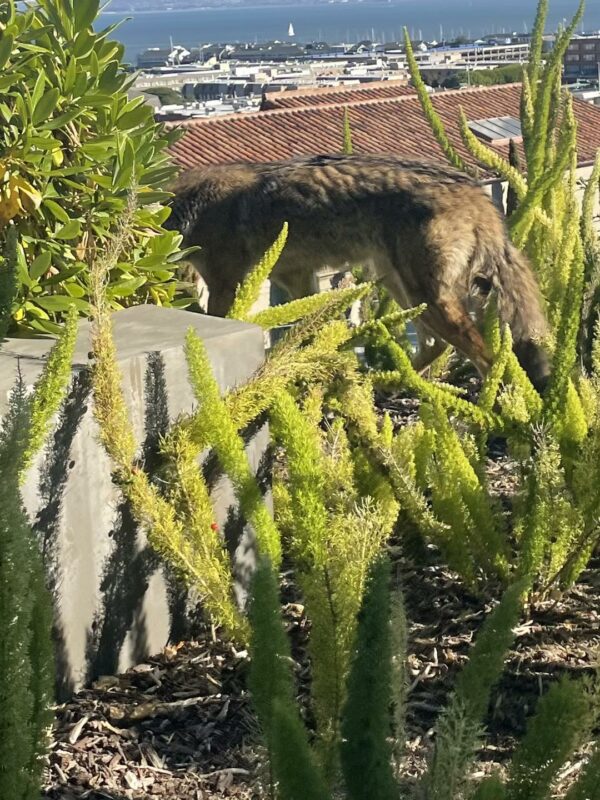
Local wildlife organizations and city authorities can collaborate on creating educational programs and sharing resources to help residents understand the wildlife in their neighborhoods. This coyote’s story can be a springboard for such initiatives, illustrating the importance of coexistence and respect for nature even in urban settings.
Let’s take inspiration from this serene encounter and work towards becoming more informed and considerate neighbors to the wild inhabitants of our cities. By fostering an environment of respect and understanding, we ensure that future generations will also enjoy the richness of biodiversity that urban areas can support. Let the coyote on the couch remind us of our responsibility to live sustainably and harmoniously with all creatures, big and small.
Final Reflections
This story of a mysterious visitor on a patio is more than just an amusing anecdote; it’s a powerful narrative about understanding, acceptance, and the surprises nature can bring into our lives. It reminds us that wildlife, even in urban areas, has a place and a role to play, contributing to the health and balance of our ecosystems.
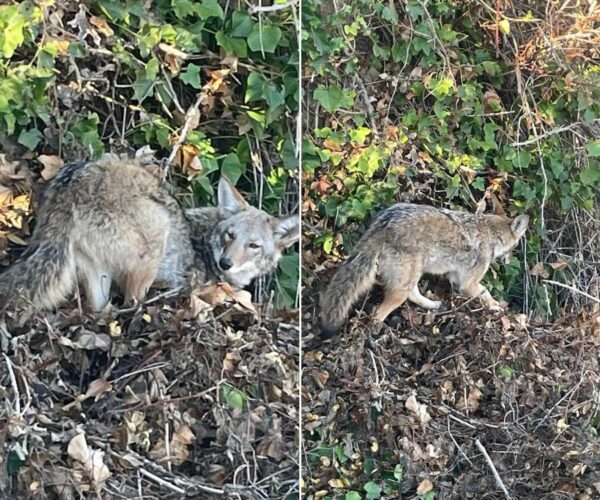
The coyote, a symbol of the wild, finding a moment of rest in a human-dominated space, challenges us to reconsider our perceptions of wildlife. It invites us to reflect on how we can better accommodate and appreciate the natural world in our everyday lives. The homeowner’s experience underscores the beauty and tranquility that wildlife can bring into our lives, enriching our urban experiences in unexpected ways.
As cities continue to grow and expand, stories like these are crucial for fostering an appreciation for the oft-overlooked wildlife neighbors we have. They encourage us to look beyond the concrete and the crowded, to the wild and wonderful creatures that roam at the edges of our urban landscapes. It’s a call to action for all of us to become more aware of and compassionate towards the wildlife around us.
Let’s not wait for wildlife to come to us but actively engage in practices that support their survival and well-being. The coyote on the patio should not be an anomaly but a reminder of the wild wonder that still persists around us, urging us to act responsibly and kindly towards all beings. By sharing stories like this, we not only entertain but educate and inspire a more harmonious coexistence between humans and nature.

